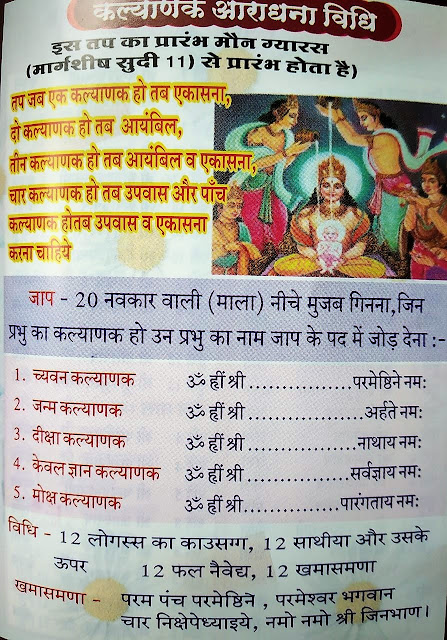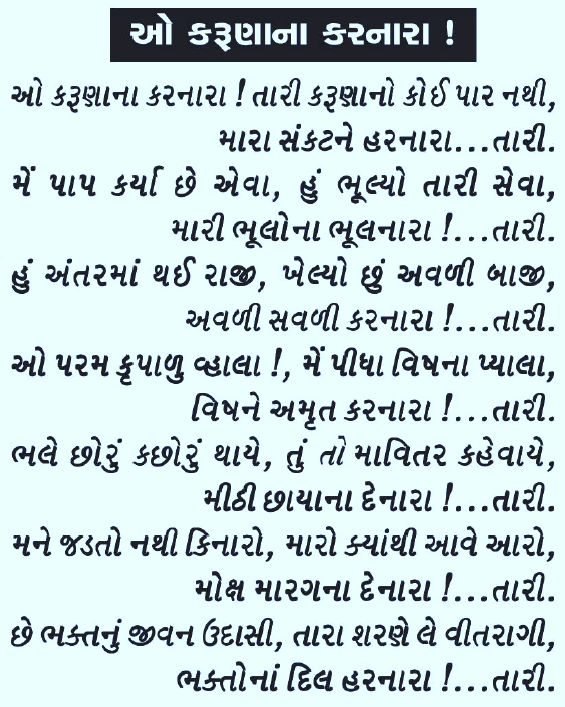||Bhagawan
Mahavir||
 |
| Mahavir Swami |
About 2600
years ago, religion in India took on a very ugly turn. The management of the
original four classes of society - Brahmins, Kshatriyas, Vaishyas, and Shudras
had deteriorated. Brahmins were learned people and considered themselves to be
very superior. The fate of Shudras or untouchables was terrible and they were
required to serve the other castes forever performing the most degrading tasks.
They were not allowed to engage in other professions. The importance of
sacrifices as a symbol of giving up and renouncing had been misconstrued and it
had taken on a very violent form. Animal sacrifices were performed regularly
and people believed that these sacrifices would please the Gods and in return
their wishes would be fulfilled.
 |
| Bhagwan's Abbhishek on Meru Parvat by Indra Dev |
Under such
social and religious conditions, Mahavir was born in the month of Chaitra on
the 13th day of the waxing (increasing in size) cycle of the moon in 599 BC as
per the Indian calendar. This day falls in the month of April and is celebrated
as Mahavir Janma Kalyanak day. He was born in the region known as
Kshatriya-kund or Kundalpur in the present-day state of Bihar, India. His
parents were King Siddhartha and Queen Trishala. Queen Trishala was the sister
of King Chetak, the King of Vaishali. Bhagawan Mahavir had an older brother
named Nandivardhan and a sister named Sudarshana. The family’s prosperity
started increasing ever since Queen Trishala conceived Bhagawan Mahavir, so
they named him Vardhaman, which means to “increase”.
 |
| Mahavir's Strength Parakram |
From his early childhood he was
intelligent, affectionate, and compassionate. At school he hardly needed any
instruction. He excelled in all his subjects. He also proved to be quite
fearless. Once when he was playing with his friends, a big snake appeared in
the field. His friends were scared and ran away when they saw the snake but
Vardhaman was unafraid. He caught the snake and put it in the nearby trees. On
another occasion a giant monster came to frighten him but Vardhaman was
unmoved.
He was popularly known as Mahavir (very brave) since he showed a high
level of courage and fearlessness. At an early age, he realized that worldly
happiness and pleasures do not last forever and are based mostly on the
inconvenience, miseries, and unhappiness of others. He therefore planned to
renounce his worldly life, his possessions, and worldly pleasures in search of
true spiritual happiness.
 |
| Mahavir Swami's Varsi Dan (Charity) |
However, he knew that his parents would be very sad
and hurt if he did this so he decided not to renounce his current life while
they were still alive. His parents passed away when he was 28 years old. He was
now ready to renounce his worldly life by giving up his family, friends, and possessions;
but again postponed it for two more years at the request of his older brother,
Nandivardhan. During this period he donated all his wealth to the poor and the
needy. Finally, at the age of 30, he renounced his worldly life and became a
monk.
 |
| Mahavir Swami Dikhsa : Panch Mushti |
Mahavir spent the next twelve and a half years in deep silence and
meditation to conquer his desires, feelings, and attachments. He carefully avoided harming or annoying other living
beings including animals, birds, and plants. During this time he also observed
severe austerities, fasting most of the time, moving bare feet from place to
place, and facing all types of hardships peacefully.
 |
| Mahavir Swami's Tapasya |
During this meditation period of twelve and a half
years:
• He faced a fierce and
poisonous snake, Chandkaushik, and calmed him down with his compassionate approach
 |
| Chandkaushik with Lord Mahavir |
• He suffered peacefully when a
farmer put nails in his ears
 |
| Mahaveer Swami Ear Plugged with Nails |
• He accepted food from a
house-maid, named Chandanbala, to break his approximately 6 month long fast
 |
| Chandanbala giving alms to Mahavir |
• He endured all adverse
conditions and hardships caused by uncivilized people with patience and
forgiveness
 |
| Mahavir Swami Kevalgyan (Omniscience) |
During this period, he progressed spiritually and
ultimately destroyed all four destructive (Ghati) Karmas. In doing so, he
realized perfect perception, perfect knowledge, perfect power, and perfect
bliss. This realization known as Keval-jnan (omniscience or perfect
enlightenment). Now, Mahavir became Bhagawan Mahavir or Mahavir-swami. Bhagawan
Mahavir spent the next thirty years traveling bare feet throughout India
preaching the eternal truth that he had realized.
 |
| Mahaveer Swami's diksha to 11 Gandhars |
He attracted people from all walks of life, rich and poor, kings and commoners, men and women, princes and priests, touchables and untouchables. In matters of spiritual advancement, Bhagawan Mahavir envisioned that men and women were equal. The lure of renunciation and liberation attracted women as well. Many women followed Mahavir’s path and renounced the world in search of the ultimate truth and happiness.
 |
| Mahaveer Swami's Samvosaran |
He categorized his followers into a fourfold order: monks (Sadhus), nuns (Sadhvis), laymen (Shravaks), and laywomen (Shravikas). This order is known as the Jain Sangha.
 |
| Mahaveer Swami's Vicharan with 8 Maha Pratiharya |
Bhagawan Mahavir’s sermons were compiled orally in 12 books in the form of Sutras by his immediate disciples. These books are called Anga Agam Sutras. Later, several learned Acharyas (Shruta Kevali Monks) compiled many more books to further explain the Anga Agam Sutras. All these books are called Agams or Agam Sutras and are considered as the scriptures of Jain religion. These Agam Sutras were passed on orally to future generations of ascetics. Over the course of time some of the Agam Sutras were lost. Approximately one thousand years later the memorized Agam Sutras were organized and recorded on Tadpatris (palm leaves used as paper to preserve records for future references).
The ultimate objective of His teaching was how to
attain total freedom from the cycle of birth and death and achieve a permanent
blissful state. This blissful state is also known as liberation, nirvana,
absolute freedom or Moksha.
This state is achieved when we
get rid of our Karmas. We accumulate Karma through our vices such as anger,
ego, deceit, and greed. Under the influence of Karma, the soul seeks pleasure
in materialistic belongings and possessions. This is the deep-rooted cause of
selfishness, anger, hatred, greed, violent thoughts & deeds, and other such
vices. These result in further accumulation of Karmas. Bhagawan Mahavir
preached that Right Faith (Samyag-Darshan), Right Knowledge (Samyag-Jnan), and
Right
Conduct (Samyag-Charitra) together form the real path
to get rid of Karmas which are attached to the soul.
At the heart of right conduct, lie the five great
vows:
Non-violence (Ahimsa)
|
Not to cause harm to any living beings
|
Truthfulness (Satya)
|
To speak only the harmless truth
|
Non-stealing (Achaurya)
|
Not to take anything that is not
properly given
|
Celibacy (Brahmacharya)
|
Not to indulge in sensual pleasures
|
Non-possession/Non-attachment (Aparigraha)
|
Complete detachment from people, places,
and material things
|
Jains hold these vows as the guiding principles of
their lives. These vows can be fully implemented only with the acceptance of
the philosophy of non-absolutism (Anekantavada). Monks and nuns follow these
vows strictly and totally, while Shravaks and Shravikas (lay followers) follow
the vows as far as their ability and desire permits.
If the
principles of Jainism are properly understood and faithfully adhered to they
will bring contentment, inner happiness, and joy in the present life. This will
elevate the soul in future reincarnations to a higher spiritual level,
ultimately achieving perfect enlightenment.
At the age of seventy-two (527 B.C.), Bhagawan Mahavir
attained Nirvana and his purified soul left his mortal body and achieved
complete liberation. He became a Siddha, a pure consciousness, a liberated
soul, living in a state of complete bliss forever. This event, known as
Nirvana, occurred on the last day of the Hindu and Jain calendar. We celebrate
it as Diwali or Deepavali (festival of lights).
Significant points of the Teachings of Bhagawan Mahavir:
Mahavir-swami made religion simple and natural, and
free from elaborate ritual complexities. His teachings reflected the internal
beauty and harmony of the soul.
Mahavir-swami taught the significance of human life
and stressed the importance of a positive attitude in life.
Bhagawan Mahavir’s message of non-violence (Ahimsa),
truth (Satya), non-stealing (Achaurya), celibacy (Brahmacharya), and
non-possession/non-attachment (Aparigraha) is full of universal compassion.
Bhagawan Mahavir said, “A living body is not merely an
integration of limbs and flesh, but it is the abode of the soul which has the
potential for infinite knowledge (Anant-Jnan), infinite perception
(Anant-Darshan), infinite happiness (Anant-Sukha), and infinite power and
energy (Anant-Virya).” Mahavir’s message reflects the freedom and spiritual joy
of living beings.
Mahavir-swami
emphasized that all living beings, irrespective of their size, shape, form, and
level of spiritual development are equal, and that we should love and respect
them all. In this way, he preached the gospel of universal love.
Mahavir
rejected the concept of God as a creator, protector, and destroyer of the
universe. He also denounced the worshiping of gods and goddesses as a means of
material gain and personal benefits.
Jain Religion is from Eternity and will remain until Eternity. There is no start or end to Jainism.
 |
| MAHAVIR SWAMI BHAGWAN DETAILS : जैन महावीर स्वामी भगवान |
























